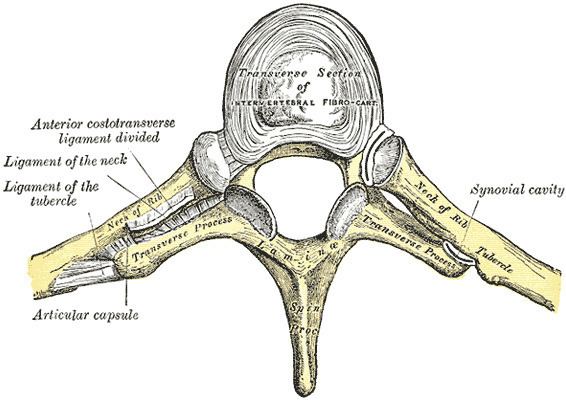Dorlands/Elsevier a_64/12161113 FMA 7952 | TA A03.3.04.005 | |
 | ||
Latin Articulatio costotransversaria | ||
The costotransverse joint is the joint formed between the facet of the tubercle of the rib and the adjacent transverse process of a thoracic vertebra. The costotransverse joint is a plane type synovial joint which, under physiological conditions, allows only gliding movement.
This costotransverse joint is present in all but the eleventh and twelfth ribs. The first ten ribs have two joints in close proximity posteriorly; the costovertebral joints and the costotranseverse joints. This arrangement restrains the motion of the ribs allowing them to work in a parallel fashion during breathing. If a typical rib had only one joint posteriorly the resultant swivel action would allow a rib to be non-parallel with respect to the neighboring ribs making for a very inefficient breathing.
The intercostal nerves innervate the costotransverse joints. Therefore, therapeutic medial branch blocks are ineffectual.
The ligaments of the joint are:
